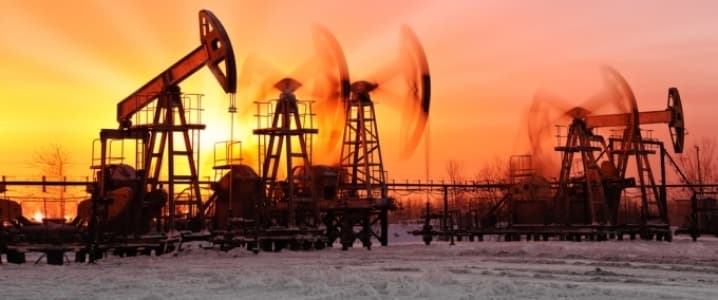Saudi Arabia’s energy minister Khalid al-Falih spoke at the Oil & Money Conference in London this week, where he offered a robust defense of OPEC’s 2014 decision to not intervene in the market to try to support oil prices. He also warned that future supply shortages could lead to a price spike.
“Now consider if OPEC had cut production to maintain supply-demand balances. The effect would have been to encourage continued investments in expensive resources like shale, oil sands, deep sea and the Arctic, etc. This process would have continued,” al-Falih said, “with OPEC having to successively cut production year after year.”
But, the crash in oil prices has created a new problem for oil markets. “Without investment,” al-Falih cautioned, decline rates will deepen, “to the point that many analysts are now sounding warning bells of future supply shortfalls.”
Indeed, with new oil discoveries at a 70-year low, there will likely be very little new sources of supply coming online towards the end of this decade. The heads of the IEA and EIA have both warned that supply could fail to keep up with demand at some point in the next few years, due to the massive cutbacks in upstream investment between 2014 and 2016. “Many analysts are warning of supply shortfalls. I am in that camp.” Al-Falih said. “There will be a period of shortage of supply.”
ExxonMobil’s CEO Rex Tillerson is not in that camp. He took the stage after the Saudi minister and said that the record levels of oil inventories will take years to work through and that even if oil prices do rise, U.S. shale will respond with new supply. “I don't quite share the same view that others have that we are somehow on the edge of a precipice. I think because we have confirmed viability of very large resource base in North America...that serves as enormous spare capacity in the system," Tillerson said at the conference. "It doesn't take mega-project dollars and it can be brought on line much more quickly than a 3-4 year project." As a result, Tillerson says, prices probably will not spike, despite the predictions from many corners of the oil world. "It is difficult for me to see a big supply press out there, it is difficult for me to see a big price blow out, there are too many elements in the system that will temper that.” Related: Gazprom Feels The Pressure Of Low Gas Prices
While many of the conference participants and industry titans are rightly focused on supply, the demand side of the equation is equally uncertain. Saudi energy minister Khalid al-Falih expects global oil demand to rise by 4 million barrels per day between 2015 and 2017. A large portion of that growth will need to come from China and India, the greatest source of incremental demand growth.
But oil demand faces an enormous downside risk should the Chinese economy slowdown more than expected. And it would face a very bumpy ride if China suffered a “hard landing,” which The Economist Intelligence Unit (EIU) thinks is distinctly possible in the next two years. According to the EIU’s “central global forecast,” China’s economy will hit the rocks in 2018. “The effects of a sharp slowdown in China in 2018 will be felt around the world,” the EIU wrote in its October Global Forecast. “The rest of the world will feel a chill through declines in equity prices and in consumer and business confidence.” On top of that, the EIU sees the U.S. dipping into recession in 2019.
If those events come to pass, oil prices won’t rebound much higher than where they are currently until the 2020s. The EIU projects oil prices to trade between $55 and $65 per barrel “for most of 2017-21.” Of course, prices will move up and down and characteristically suffer from volatility, but the EIU says that demand from emerging markets combined with “producer restraint” will put a floor beneath prices. And high inventories and a resilient U.S. shale industry will put a ceiling on any price rally. The result will be a “new equilibrium” roughly around $60 per barrel.
There is no shortage of opinions out there on where oil prices will go, and there will never be a consensus. Some, like the EIA, IEA and OPEC, see higher prices ahead. Others like the EIU, Exxon’s Rex Tillerson and a range of investment banks see low prices for years to come. In between those very different market outlooks, there is a plethora of projections, ensuring anyone can find a specific answer that they are looking for.
By Nick Cunningham of Oilprice.com
More Top Reads From Oilprice.com:
- ‘’Russia Could Add Another 4 Million Bpd To Daily Output’’
- Why Oil Could Head Back To $90 Sooner Than Thought
- A Glimpse Into Saudi Arabia’s Secret Oil Strategy


















